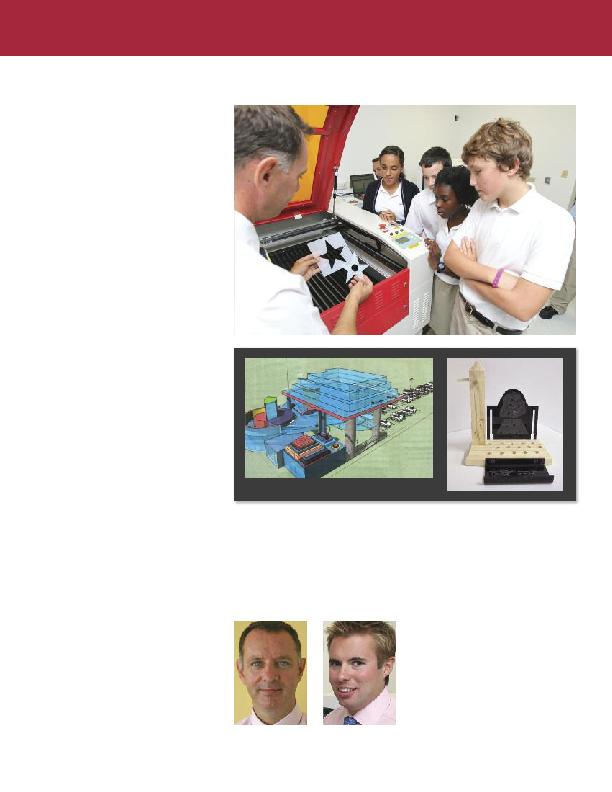
ment are giving students a taste of life
as 21st-century engineers.
of a laser cutter able to produce two-
dimensional work and a Denford
Router 2600 Pro for cutting a range of
resistant materials such as wood, plastic,
modelling foam and acrylic to produce
3D work. The purchase--funded by
longtime Trustee Charlie Marshall--
opens up a world of hands-on
computer-aided design (CAD) and
computer-aided manufacturing (CAM)
experience to Secondary students--at a
time when global economies are crying
out for technology-skilled engineers,
architects and industrial designers,
according to DT Head Phillip Heap.
turing technologies, employers recognise
the workforce needs to be adaptive,
creative, analytical and highly competent
with computer programs," he says.
"over the past two years, Design Tech-
nology at Saltus has been transformed
into a high-tech department which can
deliver those skills necessary to give
students a leading edge for future
college careers and employment."
access to CAD/CAM manufacturing--
the same computer software used by the
automotive, aerospace and industrial
design industries to create technical
drawings and control machines to
manufacture products. From Years 7 to
SGY, students use a variety of CAD
software such as Google SketchUp,
Techsoft's 2D Design, Solidworks and
Pro/DESKToP to help create imaginative
ideas. Now they can also output their
industrial artworks as tangible work-
pieces. "Previously, they couldn't export
says. "Thanks to the generous donation,
they can manufacture their designs
through the latest CAM equipment."
keting, designing with CAD, planning
and construction techniques to create
products. "Students use 2D Techsoft to
produce their work," Mr. Heap explains.
"They import bitmap images from the
web and then vectorise them into
diagrams so the laser cutter can identify
what is to be engraved and cut."
year, Design Technology is today
considered a highly academic subject,
with students able to take it all the way
to A-Level and university programmes
--a trend Western design and manufac-
turing industries are driving to keep
pace with competition from China,
Singapore and other tiger economies.
A